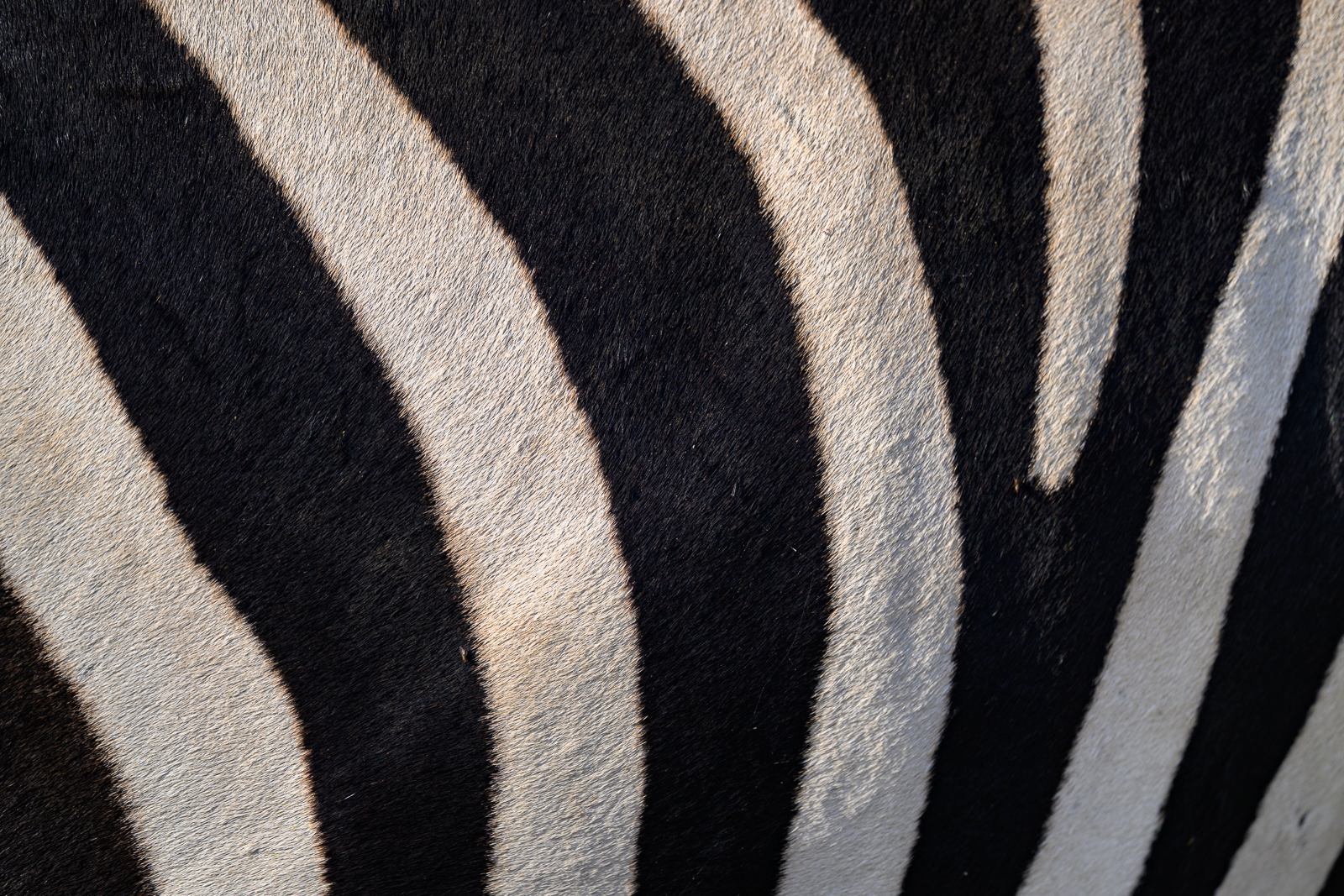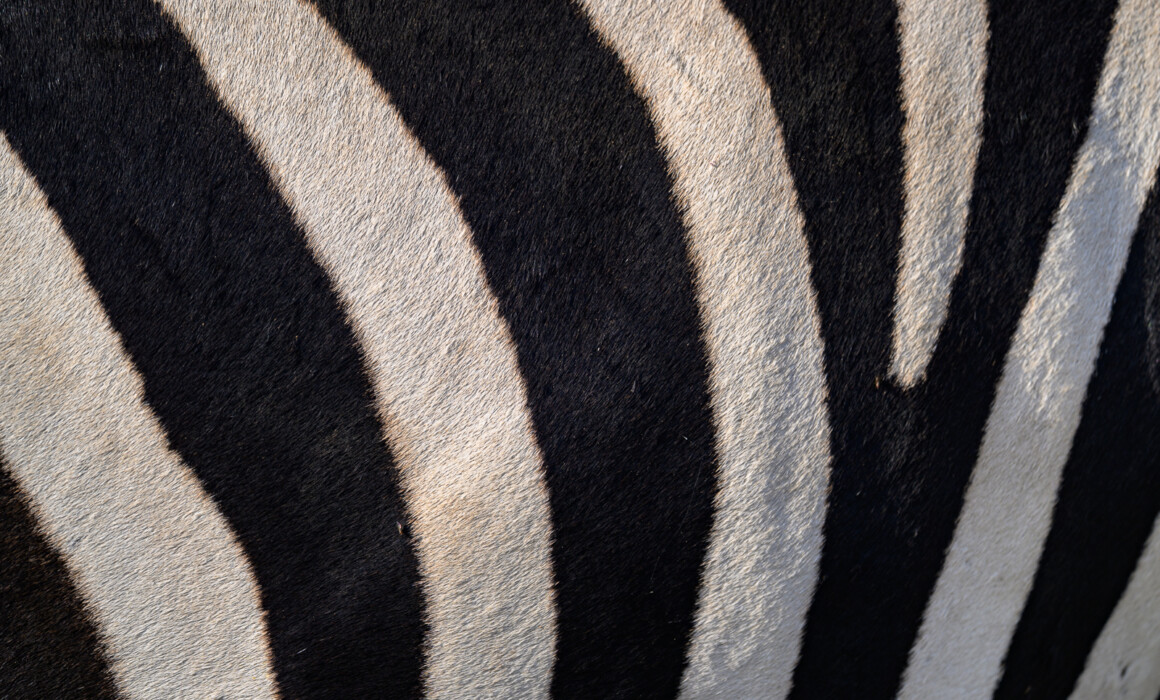Zebra Skin
 Probably more than you’ll ever need to know about a zebra’s coat, but here goes — the skin is black beneath its fur, and the stripes are formed by black and white hairs growing from follicles that contain melanocyte cells. The melanocytes are activated to produce melanin in the areas that form black stripes, while the melanocytes are deactivated in the areas that form white stripes, resulting in an absence of melanin for the white hairs. But why? The black and white stripes serve multiple purposes, though scientists are still debating exactly which is most important. One leading theory is that the stripes confuse biting insects like tsetse flies and horseflies, which struggle to land on the high-contrast patterns. The stripes may also help with thermoregulation. White hairs reflect sunlight while black hairs absorb it, creating micro-air currents that cool the skin. Additionally, the patterns may offer camouflage in tall grasses and help zebras recognize one another at a distance. And when a group is being pursued by a predator, all those stripes running together can prove very confusing. So now you know. Have a great weekend everyone. Nikon Z8 with Nikkor 500mm PF lens, ISO 180, f/5.6 at 1/640th of a second.
Probably more than you’ll ever need to know about a zebra’s coat, but here goes — the skin is black beneath its fur, and the stripes are formed by black and white hairs growing from follicles that contain melanocyte cells. The melanocytes are activated to produce melanin in the areas that form black stripes, while the melanocytes are deactivated in the areas that form white stripes, resulting in an absence of melanin for the white hairs. But why? The black and white stripes serve multiple purposes, though scientists are still debating exactly which is most important. One leading theory is that the stripes confuse biting insects like tsetse flies and horseflies, which struggle to land on the high-contrast patterns. The stripes may also help with thermoregulation. White hairs reflect sunlight while black hairs absorb it, creating micro-air currents that cool the skin. Additionally, the patterns may offer camouflage in tall grasses and help zebras recognize one another at a distance. And when a group is being pursued by a predator, all those stripes running together can prove very confusing. So now you know. Have a great weekend everyone. Nikon Z8 with Nikkor 500mm PF lens, ISO 180, f/5.6 at 1/640th of a second.



Fascinating! Thanks for the enlightenment.
Nice detail. Sean!
That is great info to share, thank you 🙂 Have a nice weekend…